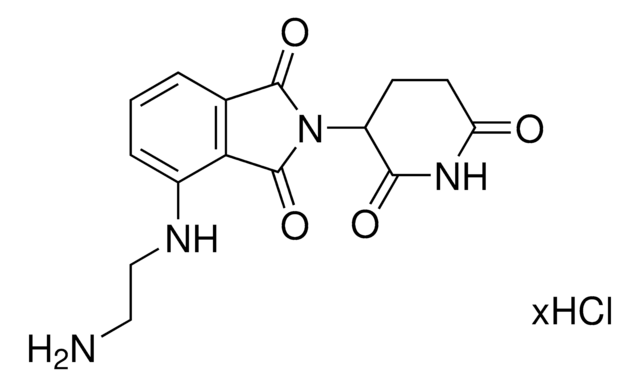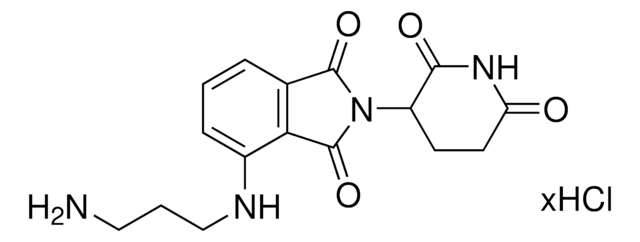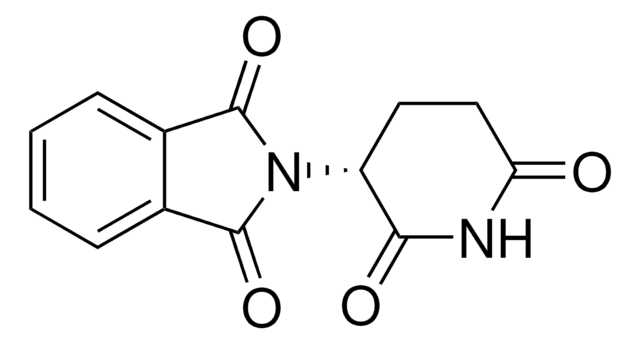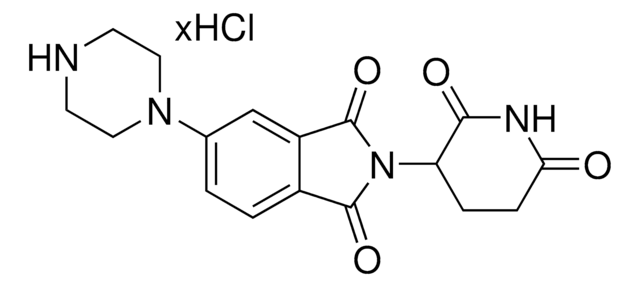934275
Pomalidomide-piperazine
≥ 95.0%
Synonyme(s) :
1H-Isoindole-1,3(2H)-dione, 2-(2,6-dioxo-3-piperidinyl)-4-(1-piperazinyl)-2-(2,6-Dioxopiperidin-3-yl)-4-(piperazin-1-yl)isoindole-1,3-dione
About This Item
Produits recommandés
ligand
pomalidomide
Niveau de qualité
Pureté
≥ 95.0%
Forme
powder or crystals
Couleur
faint yellow to dark yellow
Température de stockage
2-8°C
Chaîne SMILES
O=C1NC(=O)C(N2C(=O)C3=CC=CC(=C3C2=O)N4CCNCC4)CC1
Application
Technology Spotlight:
Degrader Building Blocks for Targeted Protein Degradation
Protein Degrader Building Blocks
Autres remarques
Destruction of DNA-Binding Proteins by Programmable Oligonucleotide PROTAC (O′PROTAC): Effective Targeting of LEF1 and ERG
Small-Molecule PROTACS: New Approaches to Protein Degradation
Targeted Protein Degradation: from Chemical Biology to Drug Discovery
Impact of linker length on the activity of PROTACs
Informations légales
Mention d'avertissement
Danger
Mentions de danger
Conseils de prudence
Classification des risques
Repr. 1B
Code de la classe de stockage
6.1C - Combustible acute toxic Cat.3 / toxic compounds or compounds which causing chronic effects
Classe de danger pour l'eau (WGK)
WGK 3
Point d'éclair (°F)
Not applicable
Point d'éclair (°C)
Not applicable
Certificats d'analyse (COA)
Recherchez un Certificats d'analyse (COA) en saisissant le numéro de lot du produit. Les numéros de lot figurent sur l'étiquette du produit après les mots "Lot" ou "Batch".
Déjà en possession de ce produit ?
Retrouvez la documentation relative aux produits que vous avez récemment achetés dans la Bibliothèque de documents.
Notre équipe de scientifiques dispose d'une expérience dans tous les secteurs de la recherche, notamment en sciences de la vie, science des matériaux, synthèse chimique, chromatographie, analyse et dans de nombreux autres domaines..
Contacter notre Service technique







